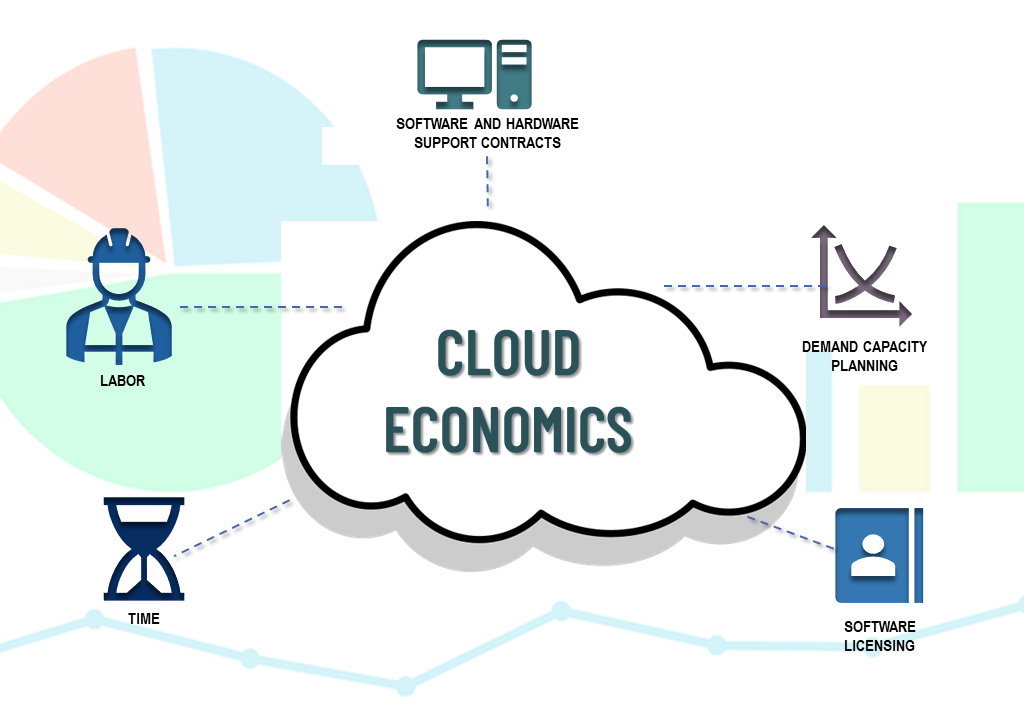
Determining the Cost of Cloud
Migration to cloud services is a plan built on the promise of savings. Saving on infrastructure cost and savings in time to deploying new services, applications, or capacity. But, often companies find that their journey to cloud is more costly than they had anticipated.
Why?
- They don’t start with an automation plan allowing for the addition of a “just in time” capacity model
- They minimize the Cloud Service Providers pricing structure on services and usage sprawl
- They don’t implementing a metering and consumption program as part of the initial migration
- They mimic their business as usual model within a cloud services framework
- They become “cloud locked” creating critical dependencies with a single cloud service provider
Principles of Savings in the Cloud
Setting targets for initial cloud migrations are critical as well as establishing strict monthly spend rates that can be tied to automation, policy, and practice. If you have migrated to use cloud services it was either to reduce the cost of information technology services for your organization or to improve “time to market”. Establishing metrics prior to migration is important. Identifying which aspects of IT you are targeting for savings and comparing before and after metrics is fairly straight forward.
Common areas to find savings:
- Labor: Reduce the amount of people that are required to support and maintain IT infrastructure. Repurposing staff to focus more on forward leaning technologies and products.
- Software and Hardware Support Contracts: On-prem support contracts can be a significant cost associated with maintaining services in IT. In many cases they can exceed 20% of the initial capital costs year over year..
- Software Licensing: Licensing based on the number of instances, CPUs or capacity are costly ands can result in large expenses that go unconsumed. Just in case licensing.
- Demand Capacity Planning: Legacy environment require the acquisition of physical, servers, storage and network to accommodate “planned” growth of services. Because the implementation of new capacity can be time consuming, aggressive approaches are taken usually leaving significant stranded capacity.
- Time: Automation reduces the amount of time needed to accomplish the same tasks. Reducing time to market through automation can lead to a larger technology/product portfolio.
Metering:
Metering comes in many forms and sources. Combining data sources that make metering information meaningful can help drive savings. Just knowing how long an instance has been. running is better when you can track what work that instance did along with it. Measuring every aspect of IT!
Establishing demand and consumption metrics that allow for 80-90% use instead of the traditional 10-30% in legacy datacenter. Allow “Just in Time” workloads to spin up when needed, then go away when they are not.
Hybrid Clouds Services:
Compute, Storage and Network are commodities now, locking yourself into a single source can put you at a huge disadvantage. Being able to migrate workload on demand is critical where you can further leverage opportunities to save. Migrating workloads to a lower cost cloud service provider with a lower service level may make sense depending on the technology.
Many of the Services offered by Cloud Service Providers are proprietary. Becoming dependent on these API’s will limit your ability to move and many have significant costs associated with them. Convenience has a price either monetary or in limiting future options.
Let Us Help
We can help sort all of this out with you, so you can achieve the financial milestones your cloud journey was meant to achieve. Putting real numbers up front so there are no surprises when accruals don’t line up with invoices. We can fix it.

